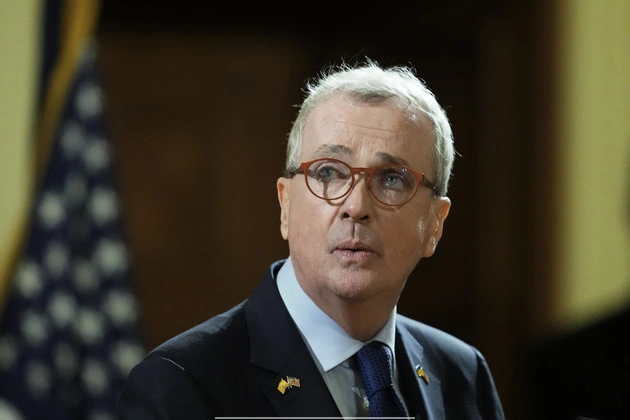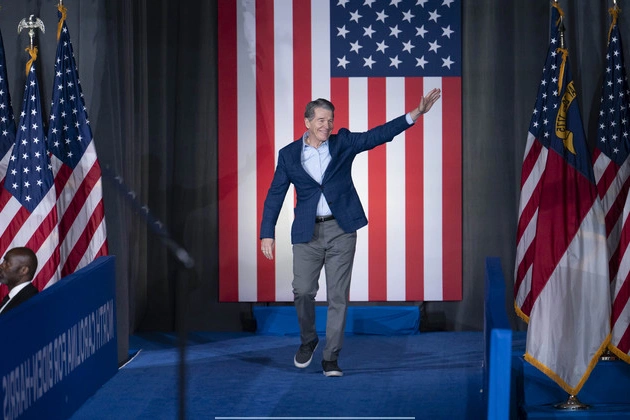
On Friday, Democrats celebrated a significant achievement, surpassing the number of judges confirmed under President Joe Biden compared to the total confirmed during Donald Trump’s initial term. This milestone limits Trump’s ability to impose a more pronounced conservative influence on the judiciary, positioning Democrats to maintain their momentum into the upcoming year.
Despite holding a slim majority, Senate Democrats have successfully confirmed 235 of Biden’s judicial nominations, outpacing the 234 confirmations achieved by Trump during his first term. Currently, Biden’s appointments constitute approximately one-fourth of the entire federal judiciary.
In a strategic move that could further mitigate Trump’s judicial legacy, Democrats are preparing to pressure Republicans to uphold a practice requiring the endorsement of a state’s two senators for lower-level federal judicial appointments.
Key members of the Judiciary Committee, including outgoing Chair Dick Durbin from Illinois, have resisted calls from within their party to abandon the “blue slip” tradition over the past two years, and they are now urging Republicans to uphold the same standard.
When asked about his intention to continue this practice, incoming Senate Judiciary Chair Sen. Chuck Grassley (R-Iowa) replied succinctly, “Yes.”
This continuity is advantageous for Democrats. Larger blue states such as California, New York, and Illinois have more federal judicial vacancies to fill, necessitating two Democratic endorsements for any Trump administration appointments. Additionally, a proposed agreement that would have expanded federal judgeships and allocated positions for Republicans is likely to face a veto from Biden.
“There are way more district judges in Democratic states than there are in Republican states,” remarked Sen. Sheldon Whitehouse (D-R.I.), a senior member of the Judiciary Committee. “For us to let the district court blue slip go would create a real structural problem over the long haul, so Chairman Durbin did absolutely the right thing to hold that.”
Democrats believe that appointing less conservative judges to district courts will serve as a frontline defense against policies from the Trump administration as they brace for the incoming president and other Republicans to implement a host of new initiatives through executive orders and other means.
The implications of court rulings could be far-reaching, affecting critical issues like abortion rights, student loan forgiveness, climate change, and more. While cases can ascend to appellate courts and beyond, it is the district courts that typically have the first opportunity to address federal policy challenges.
“Judges matter. They shape the everyday lives of Americans, preserving our freedoms and defending our liberties,” Biden stated following a judge’s official Senate confirmation. “They hear cases and issue rulings on whether Americans can cast their ballots, whether workers can unionize and make a living wage for their families, and whether children can breathe clean air and drink clean water.”
Even some Republicans reluctantly concede that Durbin has efficiently and aggressively filled judicial vacancies over the past four years.
“Dick Durbin has sadly been very effective. He’s been very good. I wish he hadn’t been,” commented Sen. Josh Hawley (R-Mo.), a Judiciary Committee member, in an interview. “He’s run the committee really, really efficiently.”
Democrats have largely streamlined the process: currently, there are only 36 federal court vacancies, with an additional 11 anticipated as judges announce their retirements. In stark contrast, Trump began his first term in 2017 facing a remarkable 112 vacancies and 15 expected retirements.
Biden commenced his tenure with 49 current vacancies and five future ones available for appointments to the federal bench.
However, Trump may still hold the potential for significant influence at the Supreme Court level. Justices Clarence Thomas and Samuel Alito, both in their 70s, are on the retirement radar. Should Trump nominate replacements for either or both, he could solidify a conservative legacy on the court for decades to come. Additionally, there are other justices whose retirements could create further opportunities for Trump to shift the court further to the right.
During his first term, Trump successfully filled three vacancies, meaning that if either or both of the aforementioned justices retire, approximately half of the court would be comprised of his appointees.
States like Texas and Florida, which have a high number of judicial openings and two Republican senators, could also facilitate Trump’s ability to nominate his preferred candidates.
“I can’t wait for President Trump to nominate some more judges — to me that was one of his great legacies,” said Sen. John Cornyn (R-Texas), a senior Judiciary Committee member.
While Trump might have had the chance to step into additional judicial positions through a bipartisan agreement reached this term, that prospect now seems unlikely. Earlier this year, the Senate unanimously approved a bill to create 66 district court judgeships over the next three presidential terms, with advocates seeking to finalize the deal before the 2024 election to avoid partisan gains. However, House Republicans delayed passage until after the election, and Biden has indicated plans to veto it.
Nonetheless, a separate judicial agreement was reached — Senate Majority Leader Chuck Schumer negotiated with Republicans to leave four appellate court slots open until next year in exchange for swift consideration of a dozen district court judges.
Democrats have asserted that they lacked the necessary support for those confirmations regardless. Furthermore, one of the appellate jurists later retracted his retirement intentions, provoking frustration among Republicans.
Despite these challenges, several GOP senators told POLITICO they believed they benefited from the agreement. Sen. Eric Schmitt (R-Mo.), a Judiciary member with close ties to Trump, described it as a “good deal.”
Senate Democrats have faced their share of criticism regarding their management of judicial vacancies, yet Durbin emphasized their success in surpassing Trump’s record under challenging conditions.
“In two years, we’ve had a tied Senate and a tied committee, [and] we reported out almost 100 judges,” Durbin remarked. “Pretty good, huh? You can’t say yes, but I’ll say it for you: Pretty damn good.”
Republicans assert they are eager to confirm more of Trump’s judicial picks and plan to take cues from Durbin to ensure all openings are filled.
“All I can say is: I hope Republicans will look at what he’s done in these last four years,” Hawley concluded.















